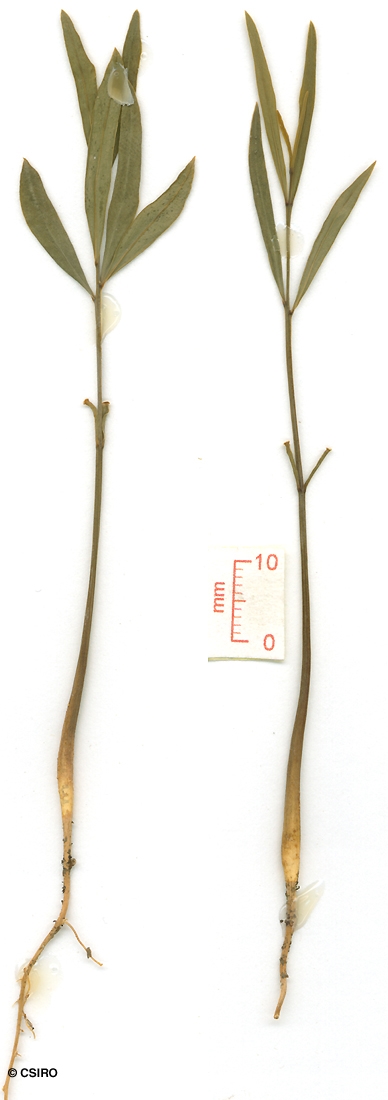Australian Tropical Rainforest Plants - Online edition
Santalum lanceolatum R.Br.




Brown, R. (1810) Prodromus Florae Novae Hollandiae : 356. Type: Queensland, Sweers Island, 18 Nov. 1802, R. Brown; iso: MEL.
Queensland Sandalwood; Plumwood; Sandalwood, Queensland; True Sandalwood; Tropical Sandalwood; Sandalwood, True; Sandalwood, Tropical; Sandalwood, Northern; Sandalwood, Lanceleaf; Sandalwood, Commercial; Sandalwood; Northern Sandalwood; Northern Sandalbox; Lanceleaf Sandalwood; Commercial Sandalwood; Australian Sandalwood; Sandalwood, Australian
A small tree seldom exceeding 30 cm dbh.
Cotyledons +/- linear, about 10-15 mm long, not clearly differentiated into a lamina and petiole. The upper half of each cotyledon usually remaining in the seed coat, i.e. each cotyledon cut near the middle. First pair of leaves +/- linear, alternate or sub-opposite, penninerved, margins slightly recurved. At the tenth leaf stage: leaf blade decussate, linear, about 90 x 8 mm; petiole very short, leaf blade +/- sessile; all parts of the seedling completely glabrous. Seed germination time 39 to 404 days.
Endemic to Australia, occurs in WA, NT, CYP, NEQ, CEQ and southwards to most parts of mainland Australia. Altitudinal range in northern Australia from near sea level to 400 m. Usually grows in open forest and woodland but also found in monsoon forest.
Food plant for the larval stages of the Wood White Butterfly. Common & Waterhouse (1981).
This plant entered into Aboriginal medicine for both internal and external use. Leaves were burnt to drive away mosquitoes. Cribb (1981).
May be parasitic on the roots of other plants.





